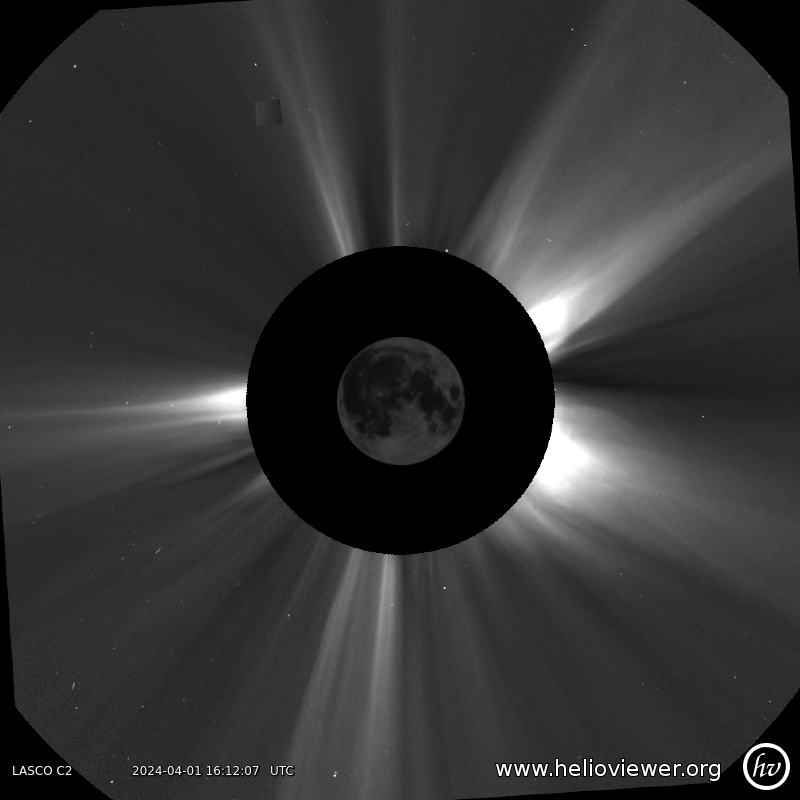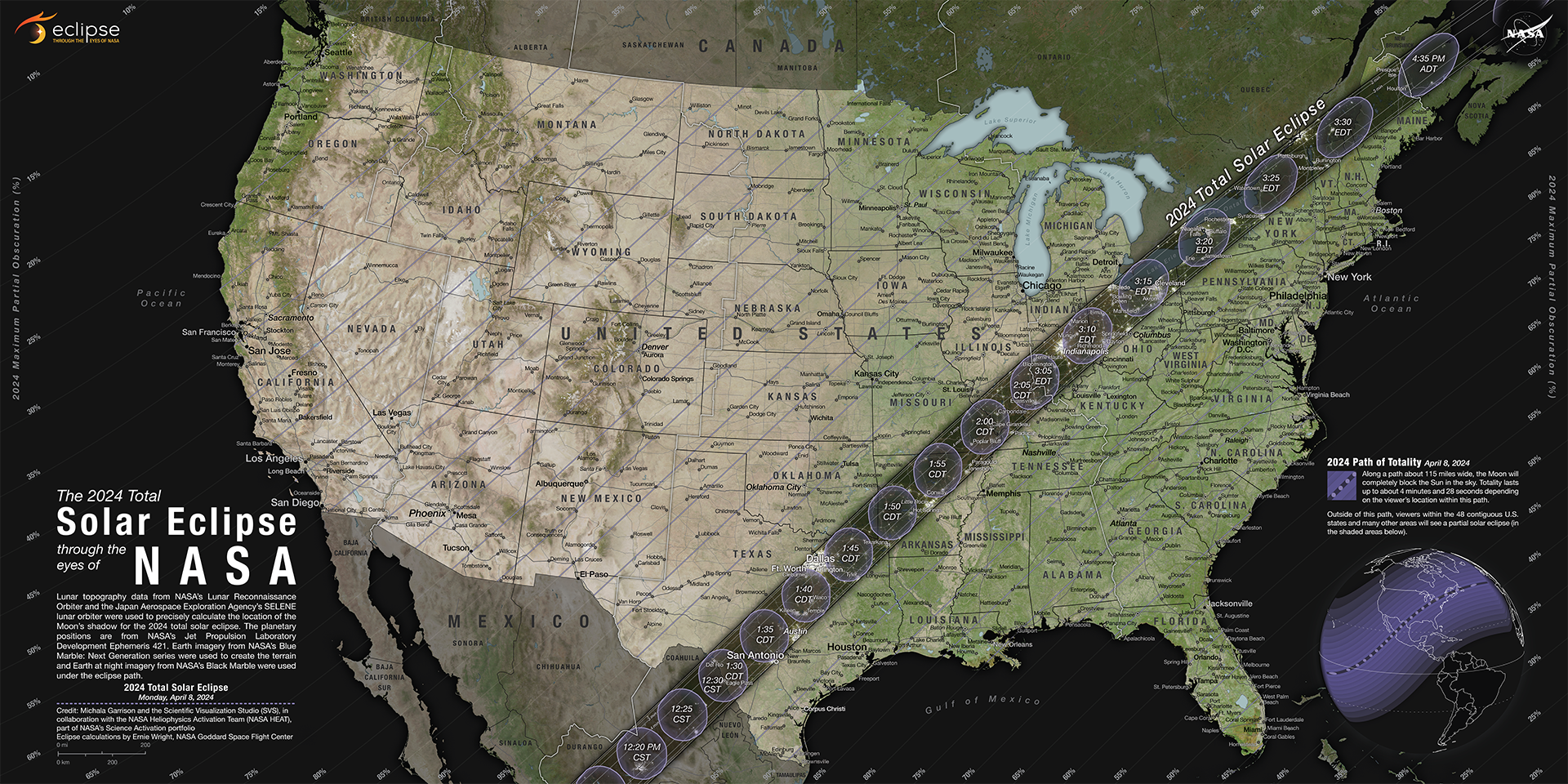4 min read
Do you wish you could see a total solar eclipse every day? With a new online tool called Eclipse Watch, you can observe the Sun's outer atmosphere, or corona, in real time with eclipse-like images from space as we count down to the next total solar eclipse on Earth.

The new Helioviewer Eclipse Watch data visualization tool displays images captured by the Solar and Heliospheric Observatory (SOHO), a joint NASA-ESA (European Space Agency) mission stationed one million miles from Earth. Each time you refresh the page, you can see the latest image from the spacecraft. These images showcase some of the features of the Sun that you may also be able to see from the ground on Earth when the Moon completely covers the Sun during the total solar eclipse.

A total solar eclipse occurs when the Moon passes between the Sun and Earth, completely blocking the face of the Sun. This celestial event reveals the extended atmosphere of the Sun, which is normally obscured from view by bright sunlight. Hot gas streaming from the surface of the Sun into interplanetary space can be observed during this time.
To study the Sun's extended atmosphere when a total solar eclipse isn't happening, scientists can use special telescopes called coronagraphs. These instruments create an artificial eclipse by using a round disk to block out the light from the Sun (the same way the Moon does during an eclipse) and reveal parts of the Sun's atmosphere that are normally too dim to see.
The Helioviewer Eclipse Watch provides eclipse-like images that are captured over a hundred times each day by the Large Angle and Spectrometric Coronagraph Experiment (LASCO) instrument on the SOHO spacecraft. LASCO observes the Sun's corona and can identify clouds of material called coronal mass ejections that erupt from the Sun. These images offer a glimpse of what you could witness during the historic celestial event on April 8. LASCO's disk obscures a larger area than the Moon will block during the total solar eclipse, as indicated by the black circular area in the Eclipse Watch tool. A picture of the Moon is overlaid on the image for scale. This means that during the total eclipse on Earth you will get to see even more of the Sun's extended atmosphere than LASCO captures.
SOHO launched in 1995 to study our star, from the Sun's deep core to its outer corona. LASCO is one of 12 instruments on SOHO used to study different solar regions and a constant stream of particles and energy from the Sun called the solar wind. Thousands of comets that pass close to the Sun - called sungrazing comets - have also been discovered in SOHO images.
Countdown to the Eclipse
The total solar eclipse on April 8, 2024, will pass over Mexico, the United States, and Canada. The path of totality in the U.S. stretches from Texas to Maine.
A countdown timer displayed on the Eclipse Watch page indicates when the eclipse will begin in North America on April 8.
If you are inside the path of totality, your views of the eclipse may be similar, or even better, than what LASCO captures every day. Remember to use specialized eye protection for solar viewing except during the brief total phase of a total solar eclipse, when the Moon completely blocks the Sun.






